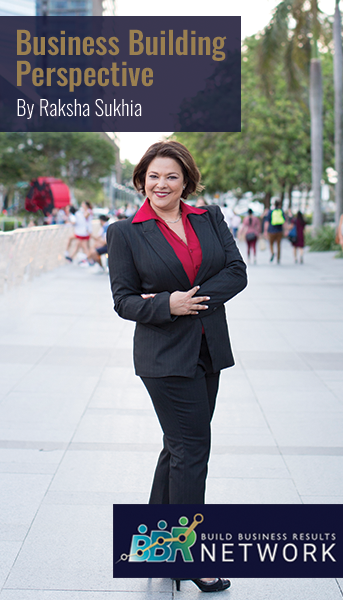5 Killer Stats To Start Your Week: Ad Blocking, Retail Sales, Ad Saturation

If you have a retail outfit you should definitely contemplate these numbers shared by Instagram. For example, if Spring is bringing about higher foot traffic and that is not translating to actual sales what can you do to cultivate the traffic to buyers? If 87% of people take action after seeing product info on Instagram, are you leveraging this channel and perhaps you should be? What should your policy be towards disabling ad blockers and the over saturation of messages? What can you do to be creative with your advertising?
And If you want to get your business or sales funnel launched fast to attract clients consistently, do check out our IGNITE Business Accelerator Program that runs weekly though September and October and Is available Live Online or In Person for DC Area Residents held at the Reston Chamber of Commerce.
See you on the action-field,
Raksha Sukhia, SMB Growth Expert,
Founder BBR Network. #bbrnetwork

1. Better weather puts spring in high street footfall:
Mild March weather helped boost shopper numbers, with footfall increasing 1.4% year on year, compared to a 6% fall last year when shoppers were deterred by the ‘Beast from the East’.
High street footfall increased 2.5% over the five weeks between 24 February and 20 March, a marked change from the 8.6% decline for the same period last year.
Retail park footfall was up 1.5%, while shopping centre footfall entered its 24th month of consecutive decline, down 1%.
However, higher footfall does not appear to have translated into higher spending, with consumers “in the midst of a no-splurge culture”. Retail sales were down by 0.5% in March, compared to an increase of 2.3% a year ago (although this included Easter).
Source: British Retail Consortium
2. Ad saturation and over-targeting putting marketing industry at risk

Brands are treading an increasingly fine line between advertising that is relevant and advertising that over-targets, with bombardment causing consumers to become ever more mistrustful and fed up with online advertising.
More than half (54%) of UK consumers object to being targeted based on their past online activity and 55% are completely apathetic towards advertising content. Meanwhile, 70% of consumers say they see the same ads over and over again and only 11% actually enjoy advertising.
However, demonstrating the power of relevancy and precision targeting when it is done right, 44% say they enjoy ads that are directly relevant, 45% agree that ads that are tailored to them are more interesting than other ads, and 61% prefer to see ads relevant to their particular interests.
Source: Kantar
3. SMEs to cut marketing spend as Brexit bites

Small- and medium-sized businesses (SME) are set to cut marketing spend over the next couple of years as Brexit has a negative impact on optimism and strategy for UK businesses.
Marketing spend is expected to fall by 2% year on year in 2019 and 5% in 2020, compared to 9% and 5% respectively globally.
The drop comes as 46% of company decision makers downgrade their economic outlook for 2020, with just 24% upgrading it and the rest unsure.
UK business people also have the lowest optimism. Just 18% of UK businesses are ‘very optimistic’ about the outlook for their own country in 2020, compared to 45% in China, 41% in the US and 38% in Germany. Some 30% in the UK are ‘somewhat optimistic’, 24% ‘neither pessimistic nor optimistic’, 26% ‘somewhat pessimistic’ and 6% ‘very pessimistic’.
Source: B2B International
4. The risks for publishers disabling ad blockers

Publishers that are experimenting with anti-adblocking technologies risk alienating users and creating distrust, according to new research.
A survey of 2,000 British online users, of which 878 have an ad blocker installed, found that 89% of those that have downloaded an ad blocker did so because they don’t want to see invasive forms of advertising. And 78% of those that use an ad blocker would be unlikely to return to a website that disables their ad blocker without permission.
Some 68% said they would be ‘very annoyed’ by this, while just 2% would not annoyed at all. More than four-fifths (81%) of British online users believe it is fair to use ad-blocking software, compared to just 6% who don’t think it is.
Nevertheless, 80% of British online users believe advertising is important for a free internet.
Source: eyeo
5. 87% of people take action after seeing product info on Instagram

Some 87% of Instagram users have taken action after seeing product information on Instagram, such as clicking through to buy or to find out more information, or going on to research the product elsewhere.
The survey of 21,000 users aged between 13 and 64 found that 83% use Instagram to help them discover new products and services. But users want brands to showcase their personality rather than just put up beautiful images.
Some 57% of people want to see fun or entertaining content from brands, with only 36% looking for beautifully produced images and videos. Nearly a third (29%) want content that brings communities together around the topics and interests they love.
A further 53% follow a brand for the content alone, even if they aren’t a fan of the brand.
Source: Instagram
Related Article
What’s a Good Landing Page Conversion Rate?
Business Agility Is the New Norm. Do You Have What It Takes?
Tags
#BBR Network, #Profitability, #Small Business Administration, #Small Business Growth, #Small Business Marketing and Sales, #SMB, #SME, 87% of people take action after seeing product info on Instagram, action after seeing product, Ad Blocking, ad saturation, Ad saturation and over-targeting putting marketing industry at risk, Better weather puts spring in high street footfall, Build Business Results, Build Business Results (BBR) Mastermind., Build Business Results (BBR) Network, Build Business Results (BBR) Network Community, Instagram, Raksha Sukhia, Self Promotion., Small Business, Small Business Growth Marketing, Small Business. #BBR Network, SMEs to cut marketing spend as Brexit bites, Social Posting, The risks for publishers disabling ad blockers










